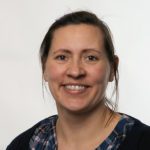The Arctic as a food-producing region
Publication details
Pages : 249–262
Year : 2021
Publication type : Academic chapter/article/Conference paper
Part of : Renewable Economies in the Arctic ( Routledge , 2021 )
Year : 2021
Links
:
DOI
:
doi.org/10.4324/9781003172406-...
Research areas
Resource management
Food systems
If you have questions about the publication, you may contact Nofima’s Chief Librarian.
Kjetil Aune
Chief Librarian
kjetil.aune@nofima.no
Summary
In 2016, the Sustainable Development Working Group (SDWG) endorsed The Arctic as a Food Producing Region research project. Involving research teams from Iceland, Norway, Canada, Greenland, and Russia, the objective of the project was to assess the potential for increased production and added value of foods originating from the Arctic, with the overarching aim of improving food security, while enhancing the social and economic conditions of Arctic communities. Although the Arctic was recognised as an important food-producing region, there was a shared sense that the Arctic was not meeting its full potential, either in terms of satisfying local food needs or for maximising its domestic or international export potential. Yet beyond speculation, much of which was informed by individual or anecdotal experience, there was little understanding of the current production capacities of Arctic food sectors or where opportunities may lie for sustainable growth. The aim of the project was, therefore, threefold: (1) complete an inventory of the current levels of Arctic food production in terms of products, volumes, revenues; (2) identify the constraints and opportunities for increased production value-added opportunities; and (3) identify potential pathways and new value chains for expanding Arctic food production and distribution opportunities. .............



